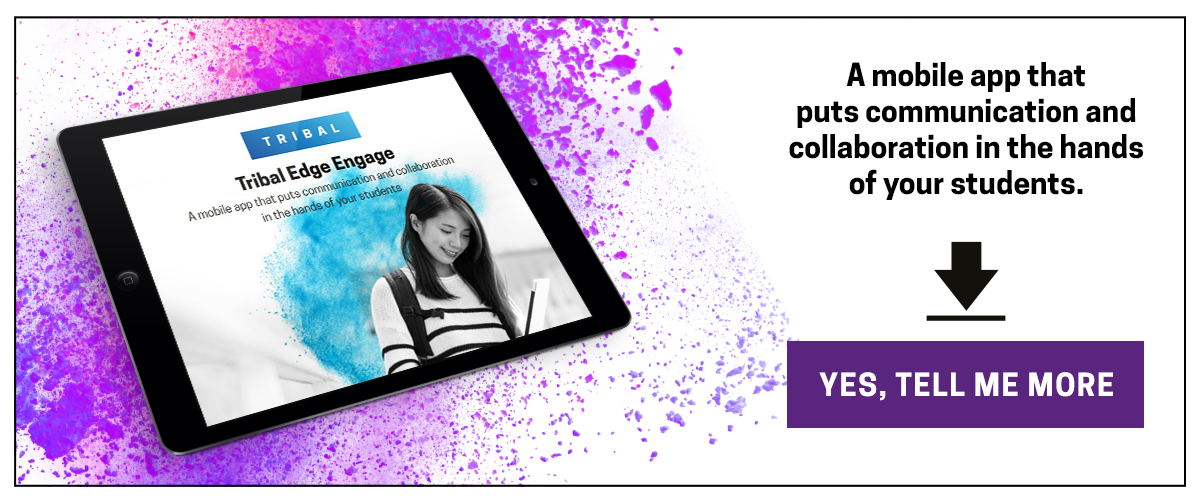If you’re looking to join the top 6% of institutions in providing the most sought-after kind of student experience, you might be interested to read that it’s not just about choosing the best student app.
- Now more than ever, students want to communicate with their provider, and their peers, through a dedicated, trusted institution branded social app. Everything they need to know, everyone they might want to speak to, and familiar looking 24/7 access, all in one place - on their smart phone.
- Universities, Vocational Education providers and training organisations similarly want real-time communication (instant feedback, attendance registers) and more variety of communication experiences (sharing of resources, videos, pictures of locations, and expressing instant opinion).
- Meanwhile, administrators want to save money by replacing outdated, ineffective communication methods (print, postal, email etc).
If you would like to find out more about an app for your institution, download our brochure here.
Yet putting instant 24/7 communication in the palms of students’ and staff hands, inevitably means a cultural shift within the educational institution. Our research suggests that even when there is an organisational appetite for a mobile app, it requires a contribution from everyone to make it a success.
Traditional communication methods are familiar and despite their shortcomings, could be preferred over having to adopt a changed mindset.
But traditional methods do not stack up financially anymore either:
- One provider surveyed reported a minimum paper and postage expenditure of over $11K (per annum) just for sending ‘Did Not Attend’ letters to students.
- Meanwhile a tutor admitted to spending over three hours contacting students about a cancelled lesson... an expensive reality of inadequate communication tools.
What’s really interesting is that even ‘modern’ methods of communication (if we can still call SMS ‘modern’) – are not only a ‘turn off’ for students, they’re a sizeable overhead as this snippet from our whitepaper on Student Communication highlights:
“One of the institutes surveyed reported an annual SMS bill of more than $47K, not to mention the administration effort needed to coordinate the communications. Yet according to the research, students see text messages as aggressive or spam – and administratively, contacting students via mobile is often ineffective as they change contracts and numbers on a regular basis…”
So, when putting together your business case for an education-oriented mobile app for students, here are the four key things we recommend you consider:
- The current financial cost of your traditional communication technology/methods, and the administrative overheads in coordinating student comms.
- The reputational cost of inadequate communication processes that ‘switch off’ learners and result in low retention rates.
- The total cost of implementing the app – including shortlisting providers, proof of concept, ensuring it integrates with all your other systems, implementation and roll out, and ongoing support for the solution.
- The financial and organisational impact of the cultural change programme you’ll need to undertake for the app to deliver your return on investment.
Then, size the increased revenue opportunity if you choose to join world-class education providers and invest in the kind of ‘Student Experience’ that learners are looking for. You’ll see the business case for implementing a best-of-breed education-oriented mobile app stacks up.
If you would like to find out more about an app for your institution, download our brochure here.
TOPICS:
SHARE THIS ARTICLE:



